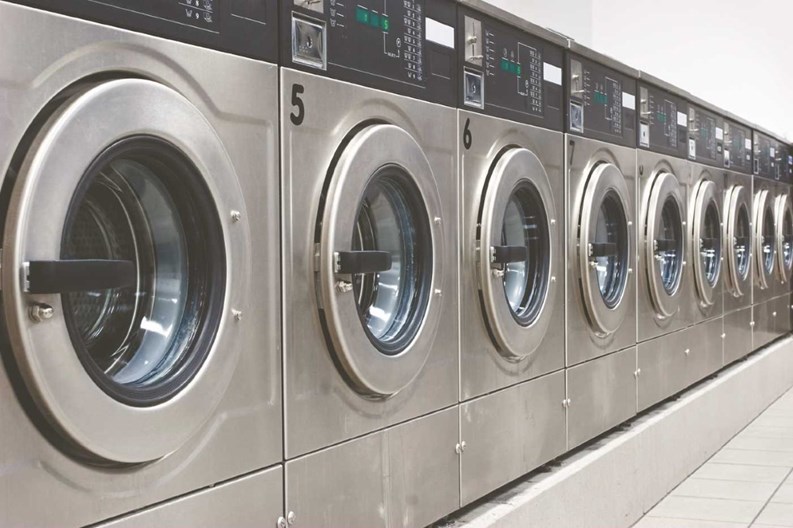Most co-op and condo buildings in the city have a laundry room for residents to use that is more than just an amenity; it’s practically a necessity. Nearly all of these co-op/condo laundry rooms are maintained by laundry contractors who service the machines and collect money from them. And when outside vendors are involved in providing a service for a building, it behooves all residents to understand just what type of service is being provided and the agreement under which that work is being done.
Understanding how contracts with laundry vendors are structured, what to expect under such contracts and available options that could be worked into the agreement, will guide board members and other residents in finding the right laundry contractor for their community.
Changing Technologies
Co-op/condo laundry rooms and laundry technology have advanced markedly in the past couple of decades. One of the most significant innovations has been the development of coinless washing machines and dryers, which now are the rule rather than the exception in New York City. Residents use such machines with credit or debit cards, or via smart phone apps that are loaded online through a secure virtual account the customer sets up.
“The business has changed tremendously because historically it was a coin-based operation. The methods of communication have also improved,” says Andrew Fisher, owner of Middle Village-based Hi-Rise Laundry Equipment Corp. “The latest is an app on your phone that allows the machine to deduct from a virtual account.”
Such technology is here to stay, it seems.
“Within the next few years in this market, coin machines will be gone almost entirely,” Fisher says.
New technologies have enabled residents to even check on the action while away from the laundry room. Having tons of coins, or even bills to change, no longer has to be part of a resident’s washing day itinerary. With laundry smart systems, the tenant can check from his or her phone to see what machines in the laundry room are in use or broken, or check to see when a load is done or when a machine is empty and available for use.
It’s a big old plastic world. Laundry Smart cards are debit cards for laundry machines that you can load on an ATM machine. Cash-to-card machines enable a resident to pay for a specific number of uses of the laundry equipment and to load them onto a card that can be used later.
It’s a greener world, too. Improved energy efficiency in commercial washing machines and dryers means lower energy bills for residential buildings. But while change machines are practically a thing of the past, these more ecologically friendly appliances aren’t embraced by everyone.
“With energy efficient machines, you can’t stuff it to the top and you can’t use a full cup of detergent. But older residents are used to doing laundry in that way,” says Schmuel Soffer, owner of NKR Laundry II Inc., in Richmond Hill. “They complain to managers… There’s a conflict there and the operator gets caught in the middle.”
High efficiency washers and dryers eventually will be mandated by the government, says Denise Savino-Erichsen, president of Automatic Industries, in Hemsptead. But despite the waste, there are still many buildings with machines that use 40 gallons of water in a cycle, versus 13 gallons per cycle for a high efficiency machine. “In New York, the water and sewage savings of high efficiency machines are significant,” she says.
The ability to access services through the Internet has enabled laundry vendors to offer the latest laundry room technology to smaller buildings with fewer than 20 apartments, Savino-Erichsen says. “It’s going to evolve into something completely different… It’s a cashless society,” she says.
It also is a society that is more than ever based upon near-immediate gratification. Decades ago, when a laundry room washing machine broke down, the Super or a resident would call the laundry vendor’s office, which would page a technician out in the field. The tech would call the office from a pay phone and find out what the problem is and where to go to fix it. Now, the information can be texted directly to the tech—speeding up the process of getting the machine running again.
If you have a virtual setup for your building’s laundry, the efficiencies abound. It’s more convenient, since machines don’t get jammed full of coins and without coins, theft isn’t a concern. Since coin-operated machines are mostly gone, people who want change for the subway or parking can no longer empty the change machines (because they aren’t there) and thereby deprive others of the coins needed to do laundry. And newer appliances often mean greater efficiency, which translates to a lower carbon footprint for the building.
Those technologies and others have made it so fewer man-hours are needed for vendors to adequately maintain the laundry room. Many laundry contractors have GPS tracking devices in their vans, enabling them to know where technicians are at any moment. The devices help companies to more efficiently dispatch their technicians to trouble spots, speeding customer service.
Finding Agreement
How a building’s staff and a laundry vendor work together depends upon the building and the type of contract it has with the vendor. There are various contracts which buildings negotiate with laundry vendors and many options in machines and services from which to choose.
It boils down to what is important to a building’s residents, which includes not just the appearance of the laundry room and its appliances, but the details of the contract with the laundry vendor. Do residents have an ecological sensitivity which makes them want energy-saving washing machines? Or maybe total control of the laundry room is what most residents want, rather than having a vendor run the show; these and other considerations should guide a board in its choice of laundry vendor, the models of appliances the building uses and the type of contract signed with the vendor.
Laundry room management/maintenance contracts can be brokered as a lease arrangement, as a management arrangement, or as a rental arrangement. A lease arrangement allows the vendor to lease the space from the building and operate the laundry room in that space. In a management arrangement, the building owns the appliances or leases them from the contractor, which maintains the machinery. A rental agreement allows the vendor to rent the space for the laundry and operate the facility. Some buildings might opt to manage the facility themselves, and lease the machines and contract maintenance of the place to a vendor.
Under most contracts, the laundry company provides everything from washer-dryers to cash-to-card machines. The cost of the machinery is borne by the company, which will replace broken machines at no cost to the customer and also will absorb some build-out costs such as electrical work and plumbing needed to set up the vendor’s machines. In many contracts, a flat rate fee is negotiated, whereby a portion of proceeds from the laundry goes to the building as a monthly fee. Some buildings negotiate a contract that stipulates a percentage of proceeds from the use of the facility be paid to the building monthly.
“The most traditional structure is where the vendor leases the space and pays the property a fixed monthly rental amount,” Fisher says.
Under most contracts, if the agreement ends and another vendor is chosen, the first vendor removes its appliances. Extraordinary costs for retrofitting the facility, such as recessed lighting or marble tile requested by residents, will be paid by the building.
High-tech gadgetry also has enabled building management to see if the vendor is forthright regarding the usage it is reporting.
“We give the building an audit card and they can determine exactly how much is in each machine,” Savino-Erichsen says.
For many vendors, the average laundry contract is seven to eight years, which is essentially the life of most commercial laundry equipment. For others, it’s a term of 5 to 10 years. Contracts can be shorter or longer as the customer likes, but some vendors will shy away from a 1-year or 2-year contract since they view it as a losing proposition, because the wear and tear on the machines is such that a longer term contract is more feasible for the vendor.
Survey & Reassess
Experts suggest that contracts be assessed by the building’s management during the last few years of a multi-year contract.
“I’d recommend the manager keep an eye on the contract the last two years of it,” Soffer says. “That’s when he should start paying more attention—look at the condition of the laundry room, speak with the tenants and ask them how they feel about the laundry room.”
Some types of machines might be unacceptable to tenants, while other concerns might not be evident. The property manager should survey tenants and see what they think about how the laundry room is run, and how they think the laundry room could be improved. Then the manager should check into potential competitors, and see if one might provide a better value or better service than the current vendor.
A building that is having repair issues with its laundry vendor might want to consider a new company. If the current vendor is not fulfilling any of its obligations, it may be time to find a new vendor. If the current vendor is doing a good job, a tweaking of the contract might be all that’s needed. Communication is essential.
Savino-Erichsen says a face-to-face meeting between management and the vendor in the laundry facility is a good way to start negotiations. From there, come up with suggestions on how service, the facility or the contract can be improved.
The laundry vendor’s main concerns during the re-negotiation process are that they get a decent contract so they can make some money.
“We’re looking to make a fair deal for everybody,” Savino-Erichsen says.
If a building opts not to renew a contract with a given laundry vendor, but that vendor owns the washing machines and other related hardware, the laundry room gets torn out and a new one is re-installed by the new vendor.
Jonathan Barnes is a freelance writer who regularly contributes to The Cooperator and other publications.







Comments
Leave a Comment